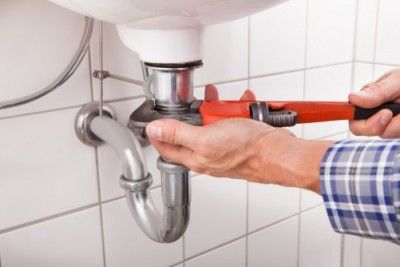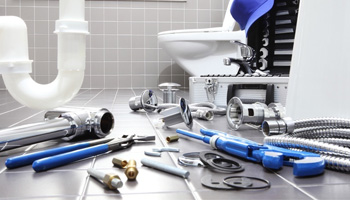Almost everyone may have their private theory in relation to Exploring Your Homes Plumbing Anatomy.

Comprehending just how your home's plumbing system functions is necessary for every property owner. From supplying clean water for alcohol consumption, cooking, and showering to safely eliminating wastewater, a properly maintained plumbing system is important for your household's health and comfort. In this comprehensive overview, we'll discover the elaborate network that makes up your home's plumbing and offer tips on upkeep, upgrades, and taking care of typical issues.
Intro
Your home's pipes system is greater than just a network of pipes; it's a complex system that ensures you have access to clean water and efficient wastewater removal. Knowing its parts and just how they interact can assist you avoid expensive repair work and guarantee every little thing runs efficiently.
Fundamental Parts of a Pipes System
Pipelines and Tubes
At the heart of your pipes system are the pipelines and tubes that carry water throughout your home. These can be made of various products such as copper, PVC, or PEX, each with its benefits in regards to resilience and cost-effectiveness.
Fixtures: Sinks, Toilets, Showers, etc.
Fixtures like sinks, toilets, showers, and bathtubs are where water is used in your home. Comprehending exactly how these fixtures link to the plumbing system aids in diagnosing problems and planning upgrades.
Valves and Shut-off Factors
Shutoffs regulate the circulation of water in your pipes system. Shut-off shutoffs are critical during emergencies or when you need to make repair work, enabling you to isolate parts of the system without interfering with water flow to the entire house.
Water Supply System
Main Water Line
The major water line attaches your home to the metropolitan water or a personal well. It's where water enters your home and is dispersed to different fixtures.
Water Meter and Pressure Regulator
The water meter actions your water use, while a pressure regulatory authority ensures that water moves at a secure pressure throughout your home's plumbing system, preventing damages to pipelines and components.
Cold Water vs. Hot Water Lines
Understanding the difference in between cold water lines, which supply water directly from the major, and warm water lines, which bring heated water from the hot water heater, helps in troubleshooting and preparing for upgrades.
Drain System
Drain Pipes and Traps
Drain pipelines bring wastewater away from sinks, showers, and toilets to the sewage system or sewage-disposal tank. Traps prevent sewage system gases from entering your home and additionally trap debris that can trigger clogs.
Air flow Pipelines
Ventilation pipelines enable air into the water drainage system, avoiding suction that can slow drain and cause traps to vacant. Appropriate air flow is important for keeping the integrity of your pipes system.
Importance of Appropriate Water Drainage
Guaranteeing appropriate water drainage avoids back-ups and water damages. Frequently cleansing drains and preserving catches can prevent expensive repair work and expand the life of your plumbing system.
Water Heating Unit
Kinds Of Hot Water Heater
Hot water heater can be tankless or conventional tank-style. Tankless heating units heat water as needed, while containers save warmed water for immediate use.
How Water Heaters Connect to the Plumbing System
Comprehending just how water heaters link to both the cold water supply and warm water circulation lines helps in diagnosing problems like inadequate hot water or leaks.
Upkeep Tips for Water Heaters
On a regular basis flushing your water heater to get rid of debris, checking the temperature setups, and checking for leakages can expand its life expectancy and boost power efficiency.
Common Plumbing Problems
Leakages and Their Reasons
Leakages can take place as a result of maturing pipelines, loose installations, or high water stress. Attending to leaks promptly protects against water damages and mold growth.
Clogs and Blockages
Obstructions in drains pipes and bathrooms are typically caused by flushing non-flushable products or a buildup of grease and hair. Making use of drainpipe screens and being mindful of what drops your drains pipes can avoid clogs.
Signs of Pipes Issues to Watch For
Low water stress, sluggish drains, foul odors, or abnormally high water costs are indications of potential pipes issues that ought to be addressed immediately.
Pipes Upkeep Tips
Regular Examinations and Checks
Arrange annual pipes assessments to catch concerns early. Try to find signs of leakages, rust, or mineral buildup in taps and showerheads.
DIY Upkeep Tasks
Basic tasks like cleansing faucet aerators, looking for bathroom leaks making use of dye tablet computers, or protecting exposed pipelines in cold climates can protect against significant pipes problems.
When to Call a Professional Plumber
Know when a pipes issue requires specialist competence. Trying complicated repairs without correct understanding can result in even more damages and higher fixing expenses.
Upgrading Your Pipes System
Reasons for Upgrading
Updating to water-efficient fixtures or changing old pipelines can improve water high quality, reduce water expenses, and raise the value of your home.
Modern Pipes Technologies and Their Benefits
Check out modern technologies like wise leak detectors, water-saving commodes, and energy-efficient water heaters that can save cash and reduce ecological impact.
Price Factors To Consider and ROI
Determine the upfront expenses versus long-term financial savings when considering plumbing upgrades. Several upgrades pay for themselves via decreased energy expenses and less repair work.
Ecological Impact and Preservation
Water-Saving Fixtures and Home Appliances
Mounting low-flow faucets, showerheads, and toilets can dramatically decrease water use without compromising performance.
Tips for Lowering Water Use
Simple behaviors like repairing leakages quickly, taking much shorter showers, and running full lots of laundry and recipes can save water and reduced your energy bills.
Eco-Friendly Pipes Options
Consider sustainable plumbing products like bamboo for floor covering, which is durable and eco-friendly, or recycled glass for counter tops.
Emergency situation Readiness
Steps to Take Throughout a Plumbing Emergency situation
Know where your shut-off valves are located and just how to shut off the water in case of a burst pipeline or major leakage.
Importance of Having Emergency Contacts Convenient
Keep call information for regional plumbers or emergency situation solutions readily available for quick response throughout a pipes dilemma.
DIY Emergency Situation Fixes (When Relevant).
Momentary repairs like using air duct tape to spot a leaking pipe or positioning a pail under a leaking faucet can decrease damages till a professional plumbing shows up.
Final thought.
Comprehending the composition of your home's pipes system equips you to preserve it successfully, saving money and time on repair services. By adhering to normal upkeep regimens and remaining notified regarding contemporary plumbing innovations, you can ensure your plumbing system operates efficiently for years ahead.
HOW YOUR PLUMBING SYSTEM WORKS
Which Pipes Do What?
Blue lines = fresh water supply entering the building
Red lines = hot water supply entering the building
Grey lines = pipes carrying waste away from the building and venting pipes carrying gases away from the building (through the roof)
YOUR MAIN PLUMBING SYSTEMS
There are two main plumbing systems that support your home s basic plumbing needs one that brings clean water into your home, and one that sends dirty water away from your home. Connected to the toilet, bath, shower, and other faucets in your home, these two systems keep your water flowing in the right directions.
ACCESSING FRESH WATER
Fresh and clean water is brought into your home through the main water supply line . Filtered through one pipe, this water is pressured to flow into the various fixtures in your home at any given time.
This water can be sourced from a well located on your property, a pond or river (mostly cottages), or, as in most cases, from the city s municipal water treatment centre. However, it is important to note that water that is untreated, such as the water siphoned from ponds or rivers, may not be safe to drink. Personal water supplies always need to be treated for hardness and contaminants before consumed.
MUNICIPAL WATER SUPPLIES
Improve taste and odour
Remove sediment
Eliminate hardness
Reduce chlorine
COLD WATER SUPPLY VS. HOT WATER SUPPLY
Cold water flows into your home or building through the service line, which then distributes hot or cold water to your fixtures. This line is most commonly run through a central column that runs floor to floor. Hot water runs in short and straight pipes as the longer the pipeline, the more heat that will be lost in the transfer. Having shorter pipes also allows residents to access hot water more quickly.
WASTE WATER SYSTEM
Your wastewater system is divided into two parts pipes that send wastewater away from your home and venting pipes that send sewer gas away from your home. Sewage water travels through pipes that flush the water and waste towards local sewers that are operated and managed by your city or town. Most sewer systems rely on gravity to move the wastewater to where it needs to go.
The further away from your toilet or sink, the larger wastewater pipes become. This allows for waste to be disposed of from various parts of your home or business at once without pipe blockages. The angle and flow of these pipes are also essential for keeping your waste pipes clear of build up.
https://harrisplumbing.ca/how-your-home-plumbing-system-works/

HOW YOUR PLUMBING SYSTEM WORKS
Which Pipes Do What?
YOUR MAIN PLUMBING SYSTEMS
There are two main plumbing systems that support your home s basic plumbing needs one that brings clean water into your home, and one that sends dirty water away from your home. Connected to the toilet, bath, shower, and other faucets in your home, these two systems keep your water flowing in the right directions.
ACCESSING FRESH WATER
Fresh and clean water is brought into your home through the main water supply line . Filtered through one pipe, this water is pressured to flow into the various fixtures in your home at any given time.
This water can be sourced from a well located on your property, a pond or river (mostly cottages), or, as in most cases, from the city s municipal water treatment centre. However, it is important to note that water that is untreated, such as the water siphoned from ponds or rivers, may not be safe to drink. Personal water supplies always need to be treated for hardness and contaminants before consumed.
MUNICIPAL WATER SUPPLIES
COLD WATER SUPPLY VS. HOT WATER SUPPLY
Cold water flows into your home or building through the service line, which then distributes hot or cold water to your fixtures. This line is most commonly run through a central column that runs floor to floor. Hot water runs in short and straight pipes as the longer the pipeline, the more heat that will be lost in the transfer. Having shorter pipes also allows residents to access hot water more quickly.
WASTE WATER SYSTEM
Your wastewater system is divided into two parts pipes that send wastewater away from your home and venting pipes that send sewer gas away from your home. Sewage water travels through pipes that flush the water and waste towards local sewers that are operated and managed by your city or town. Most sewer systems rely on gravity to move the wastewater to where it needs to go.
The further away from your toilet or sink, the larger wastewater pipes become. This allows for waste to be disposed of from various parts of your home or business at once without pipe blockages. The angle and flow of these pipes are also essential for keeping your waste pipes clear of build up.
https://harrisplumbing.ca/how-your-home-plumbing-system-works/
I was brought to that article about Exploring Your Homes Plumbing Anatomy through a pal on our other site. Liked our review? Please share it. Help somebody else discover it. I enjoy reading our article about Plumbing Installation 101: All You Need to Know.
Click Here